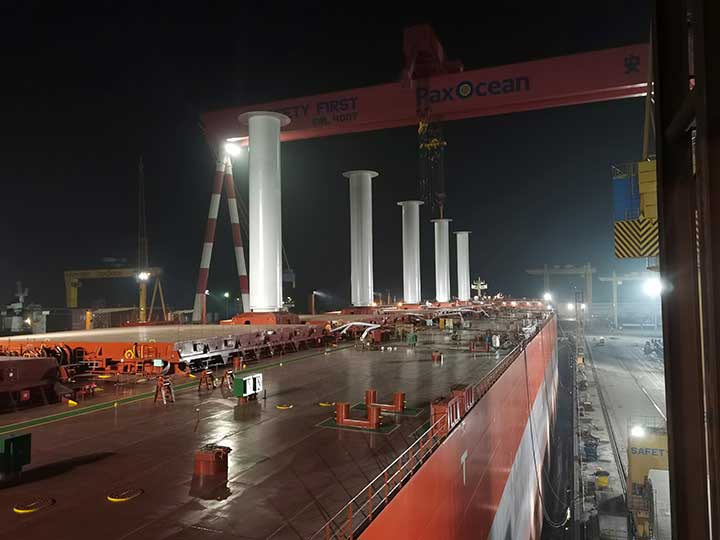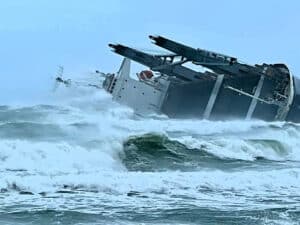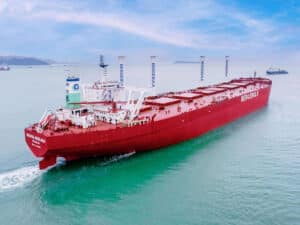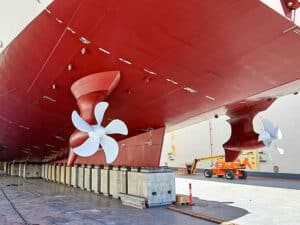
Vale VLOC newbuild fitted with 5 tilting rotor sails
Written by Nick Blenkey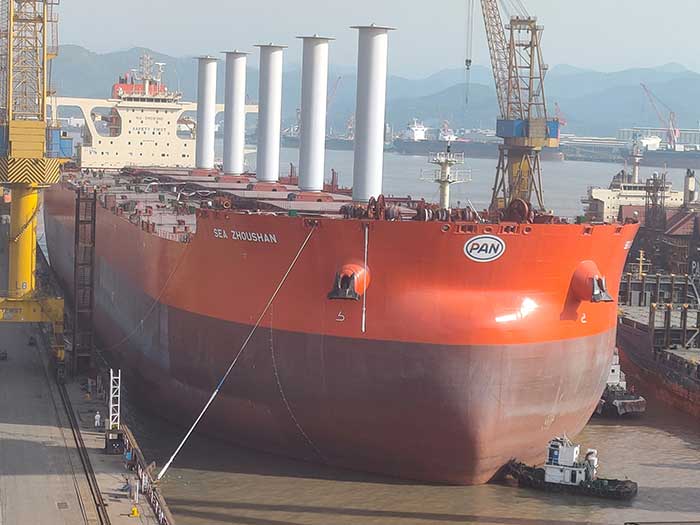
The Norsepower rotor sail solution is fully automated and detects whenever the wind is strong enough to deliver fuel and emission savings, at which point the rotor sails start automatically. [Image: Vale]
A 325,000 dwt Very Large Ore Carrier (VLOC) newbuilding under construction in China for charter to Brazilian mining giant Vale has been fitted with five Norsepower Oy tilting rotor sails. Tilting the rotor sails, using hydraulic cylinders, will enable efficient cargo operations.
The vessel is owned by Pan Ocean Ship Management. Norsepower has analysed the routes for the vessel on its charter to Vale and estimates that the rotor sail technology would be able to achieve an efficiency gain of up to 8% and a consequent reduction of up to 3,400 tons of CO2 per year.
To enable efficient cargo operations, The five 24 meter high and 4-meter diameter rotor sails can be tilted by using hydraulic cylinders.
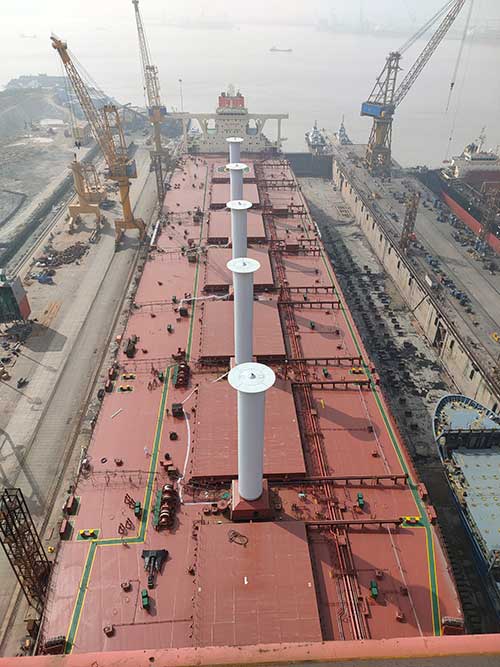
With growing pressure on shipping to move towards decarbonization, the ability to harness the wind to generate thrust is becoming an increasingly viable option to meet imminent regulatory drivers such as EEXI and CII ratings.
Norsepower has analyzed the routes for the vessel chartered by Vale and estimates that its technology would be able to achieve an efficiency gain of up to 8% and a consequent reduction of up to 3,400 tons of CO2 per year.
ROTOR SAILS MAXIMIZE PROPULSIVE POWER
Tuomas Riski, CEO, Norsepower, said: “We are delighted to be working with Vale, and supporting them to maximize the propulsive power of wind to reduce carbon and other emissions as well as protecting the sustainability of its value chain more broadly.”
“The five tilting Rotor Sails will allow Vale to maintain flexible cargo operations while also saving fuel and emissions,” said Riski. “Installing our rotor sails on the first VLOC demonstrates that our technology is adaptable across varied operational profiles and vessel types. As vessel operators and charterers strive to decarbonize, the value of wind propulsion for both a retrofit and newbuild vessels is undeniable.
“The rotor sails can reduce a vessel’s Energy Efficiency Design Index (EEDI) and future-proof vessels against impending IMO Greenhouse Gas regulations as well as against inevitable fuel price increases as new fuels enter the market.”
“We are committed to supporting the adoption of clean technology solutions for shipping to ensure that Vale’s sustainability objectives are achieved,” said Rodrigo Bermelho, Shipping Technical Manager at Vale. “Installing five rotor sails will maximize our fuel and emissions savings. We are working with Norsepower to ensure this newbuild is as environmentally friendly as possible and can achieve significant reductions in fuel consumption and CO2 emissions. If the pilot proves effective, it is estimated that at least 40% of the fleet will be able to use the technology, which would result in a reduction of almost 1.5% of Vale’s annual iron ore maritime transport emissions.”
